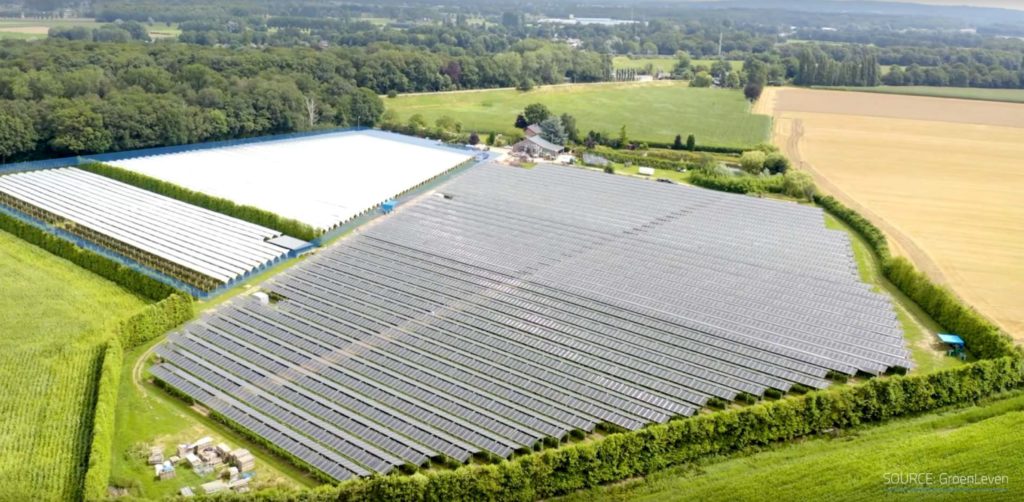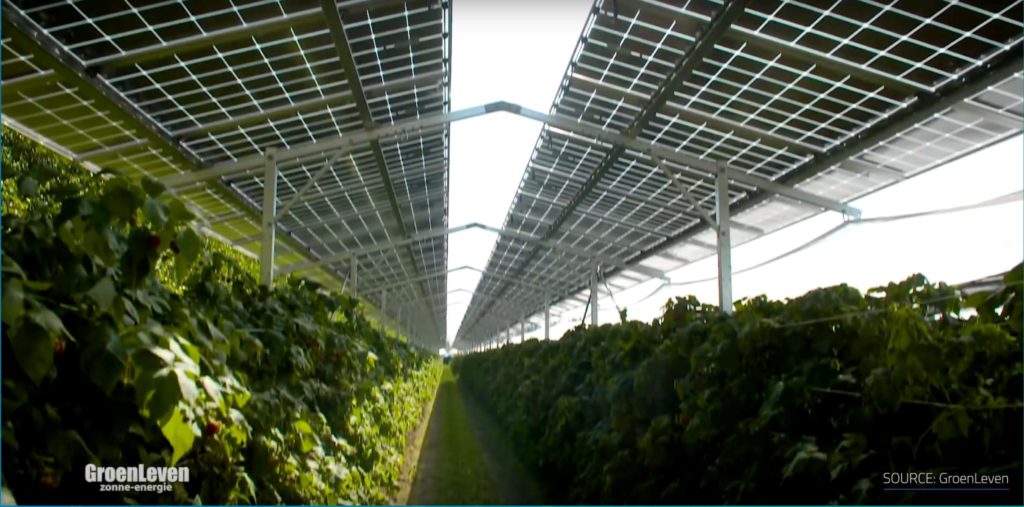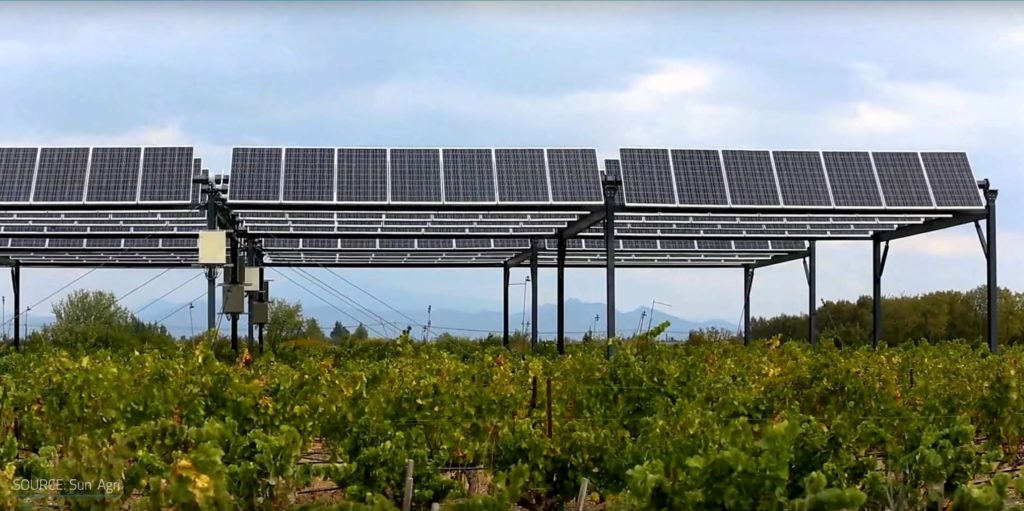Coexistence of agriculture and energy industry: agrovoltaics is the future
Over the next 10 years, the number of Earthlings is expected to rise to a staggering 10 billion. This means that a much larger number of people will have to be fed than farming will be able to do. This has already been faced with rising temperatures, stronger solar radiation, a scathing weather that has brought devastating hail in recent years.
The need for energy will also grow throughout this time. More people mean more devices, more innovation, more electricity. We are facing major challenges, especially as we are also chasing climate targets that foresee faster construction of ways to generate energy from renewable sources.
Until now, the principle of exclusion of land use has been applied worldwide and in Slovenia. So, some land could only be used for one purpose. Quite a few countries have already eliminated this and offered the possibility of dual land use, thus opening the door to the exceptional potential of agrovoltaics, which represents a unique example of coexistence between agriculture and energy.
It means the placement of solar power plants above fields, orchards, vineyards or pastures, whereby the height of the panels set may be of varying degrees, even up to 7 meters (hop plantations), or between them, i.e., vertically. In this case, the panels can protect plants from strong winds and soil from erosion due to wind.
Agrovoltaics can, with an appropriate technical design, increase land use efficiency, offer plant protection, provide a higher yield per hectare, and reduce the need for irrigation by up to 20 %. In Germany, a study by the Fraunhofer Institute showed that potato plantations had an increase in land use efficiency of 86 %.

Plants need protection
Farmers, more than any other sector, feel the effects of climate change. Sometimes the year is too hot and extremely ailing, and suddenly a storm with too much rain or hail threatens the crop. Weather extremes are higher year after year. Farmers try to secure crops with anti-current nets, but this is a worse consolation for all the effort and money invested in vegetable plantations, vines or orchards.
In solving this problem, agrovoltaic devices offer a very useful solution. Solar power plants offer partial shading against excessive rays of the sun; protect plants from frost and drying out; preserve greater soil moisture and provide excellent counter-point protection. At the same time, the arrangement of panels above the plantations makes it possible to regulate the lighting of plants. These positive effects were demonstrated by a study by the Fraunhofer ISE Institute, published in April this year.
In the pilot study, the Germans scientifically explored the economic, technical, social and ecological aspects of the possibilities of combining agriculture and energy in the form of agrovoltaics. In Heggelbach near Bodensee, different types of planting and different cultures have demonstrated that this combination is technologically feasible and economically viable.
In the extremely hot and aurous period of 2018, certain types of crops fared up to 11 % better than in the open-air reference field. The soil was better preserved under the modules, which affected better yields. According to the data known to date, for plantations under agrovoltaic devices, leafy vegetables, forage plants, fruit trees, lees, leeks, asparagus, vines and hops are the most suitable. In the case of hops, it is also worth noting the cost savings of inducing ropes and the erecting of pillars, since the supporting structure can also be used by farmers for this purpose. The least suitable for such plantations has been proven to be corn, because it needs more light and heat to grow and develop.
The installation of agrovoltaic devices makes sense where farmers also deal with the cooling, drying, or processing of crops. These opportunities give them a competitive advantage in the market, because they can sell their products at a higher price when there is no time in nature for them anymore. This way, farmers can earn twice: by selling crops or products from them, and by saving electricity.

Agrovoltaics around the world …
Agrovoltaics has spread considerably around the world in recent years. The power of installed installations for this purpose has risen from around 5 MW in 2012 to 14 GW in 2021, according to the Fraunhofer Institute. State incentives in Japan, China, France, the US and South Korea contributed the most to such rapid expansion. South Korea plans to build 100,000 agrovoltaic facilities on farms primarily to stop depopulation from the countryside. By erecting solar power plants above agricultural land, they want to give farmers an additional pension (about 1,000 US dollars a month) through electricity sales.
In the US, agrovoltaics are used in Arizona, Colorado, Indiana, Oregon and Massachusetts. The U.S. Department of Agriculture is offering financial incentives to install such facilities on farms as part of the Rural Energy Progress Program.
In Greece, aromatic plants and flowers are already growing under panels, in Spain artichokes and broccoli, in Belgium sugar beet and pears, in France the largest plant with modules on the top of the vineyard to date is placed, in Germany under panels berries (blueberries and raspberries), fruit trees (especially apples), potatoes and other crops are grown. A study in India showed that the crop of cotton and tomatoes under the agrovoltaic devices, which provided plants with partial shading and protected the soil from evaporation of water, was up to 40% higher.

… and in Slovenia?
According to the newspaper Finance, the HSE, Elektro Ljubljana and the Agricultural Institute of Slovenia (Infrastructure Center Jablje) intend to carry out a pilot project to examine the possibility of cohabiting agriculture and producing electricity on the same surface. According to Finance, funds are now being made to carry out this pilot project.
The president of the Solar Power Co-operative Dušan Gvozdič says they are carrying out a study in Haloze, where solar energy is expected to be generated on abandoned land.
Finance journalist Biserka Povše Tašić writes that she did not receive any answers from the two ministries, namely environmental and infrastructure, about agrovoltaics. It reports that the Agriculture Ministry is reluctant to dual use on farmland. It considers that “other areas such as industrial hall roofs and other degraded areas” should be used as a matter of priority for the generation of electricity. The Ministry is also not aware of information, according to Finance, that stakeholder discussions are taking place at the state level to ensure that solar power plants are set up at least on degraded agricultural land, such as abandoned pastures. The only ray of hope has been a glow from the Economic Ministry, which believes that projects such as agrovoltaics make sense in the light of green transformation.
Let’s take the opportunity!
“The biggest problem for the symbiosis of agriculture and energy in Slovenia is the ban on dual land use,” says Gregor Novak, director of SunContract and head of development and innovation at SONCE Energija. “I think it would be wise and necessary to follow Germany and other countries in the world and to allow dual land use. Agricultural land harvesting technology allows dual use under panels, ideal conditions are created for certain types of plants, so why not take advantage of this? Agrovoltaics provide excellent synergy. At this place, it is the state’s job to pull key moves, or rather to remove obstacles. We’ll do everything else on the market ourselves.“
If the energy transition is to succeed, it is necessary that the reasonableness of agrovoltaics is first seen by people in state positions. However, if we also want to achieve a wider public consensus, it is wise to involve the population in the decision-making process in a timely manner. Most non-acceptance in the world was recorded where decision-makers tried to bypass local populations and interest groups or decided to include them too late.
Where the state has followed the possibilities of synergy of agriculture and the generation of electricity from the sun, solar panels above agricultural plantations have already become part of the landscape image.
The climate crisis, water scarcity and the growing need for energy are putting humanity at enormous challenge. In the years to come, it will be clear how we will deal with them. Agrovoltaics offers a solution from which we can all acquire agriculture, energy and, above all, the inhabitants of our planet.
Sources:
https://agrobiznis.finance.si/8986967/Agrovoltaika-tretjic-slovenski-premiki-uradni-in-tihi

